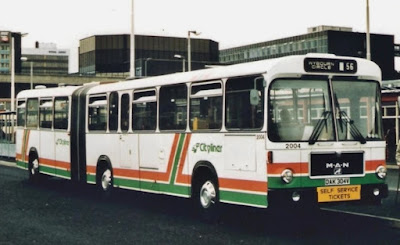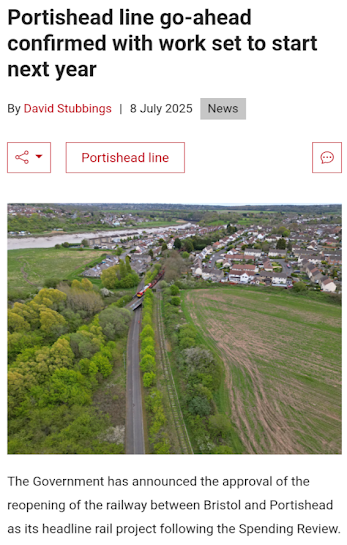Huddersfield Station Retiree
It is always sad to say goodbye to a senior member of staff but things move on and one familiar face at Huddersfield station has left for a happy retirement. For a number of years the station has been punctiliously looked after by Felix ...
... and Bolt.Now the time has come for Bolt to say miaow-bye to the platforms. He will be leaving at the same time as the human station manager, for some years his valued assistant, who is also hanging up her ticket clippers for good.So it's goodbye from Angela Hunte and goodbye from him!
Portishead And Clevedon
Herewith a picture of the proposed new station at Portishead, omitted from yesterday's posting ...... although after so many years of delay and broken promises, we can be forgiven for being a little cynical about the promised re-opening.Just down the coast from Portishead, is another railway that, according to the locals, should reopen. It is in Salthouse Park, a delightful oasis on the coast of the Bristol Channel at Clevedon.
It once had a 9 inch gauge miniature railway ...... later matching its national big brother by running a diesel!It was rebuilt as a 15 inch gauge lime and equipped with bigger motive power and bigger carriages ...... running round a simple "oval" (beloved of railway modellers) from its one station ......where there was a small siding and a loco shed.Above, we look back towards the station by the bouncy castle as the track curves round the park.
This little Clevedon delight has closed recently and people are keen to see it re-instated. You would guess that money is the problem - too much to pay for its operation and upkeep but not enough from fares.
Just like the full sized railway, in fact!
Let's hope its return doesn't take as long as the Portishead branch.
PO41 Progress
Readers may remember that part of the refurb of Ryde Esplanade station has been a new cafe which has remained finished but unopened for well over a year. Our IoW correspondent (I have to call him "senior" or he gets sulky!) has sent some photos of progress.
This is the "old" Esplanade station with the way to the trains through an entrance above and beyond the post bix.
It is the area to the left of that entrance (which has been engineered) that is the new PO41 cafe as sed by Alan.Below is the view back through the cafe to those double doors ...... and a view in the other direction towards the door that lead out to the pier walkway.Opening is still some time away but not quite as delayed as the Portishead branch. Doubtless correspondent Alan will be testing the service once it is open. fbb awaits his report in due course!
It is the area to the left of that entrance (which has been engineered) that is the new PO41 cafe as sed by Alan.Below is the view back through the cafe to those double doors ...... and a view in the other direction towards the door that lead out to the pier walkway.Opening is still some time away but not quite as delayed as the Portishead branch. Doubtless correspondent Alan will be testing the service once it is open. fbb awaits his report in due course!
The Crazy Craze Continues
In recent years we have seen the big bus groups buying up smaller coach companies like they were going out of fashion!
In recent years we have seen the big bus groups buying up smaller coach companies like they were going out of fashion!
McGills, the Scottish group that has expanded hugely, has joined much the same craze. McGills already has a coach and holidays division called Loch Lomond Coaches ...... with a smart blue livery ...... complementing the gorgeous Scottish scenery.McGills have now bought another coach operator ...... with a good solid existing business.
... in addition to a conventional coach hire business.
It should fit well with McGills existing portfolio of operations.
Puzzle Pictures
What is fbb up to now?It is connected with OO gauge tank wagons.
All will be revealed when (a) the weather get cooler and (b) when the project is sort of finished. The two are linked!
Observation Oddity
fbb really doesn't like to offer the slightest word of criticism of the work of other railway modellers who show far greater skill than your bodging blogger. But the above model does show a common mistake made by many otherwise dedicated enthusiasts.
The same mistake appears on this superb model presented as an up to date version of Hornby Dublo three rail modelling.
Answers later this week.
Tomorrow we go to Paris.
Next "Magenta via Magenta" blog : Mon 14 July












.jpg)























.jpg)



.jpg)






.png)





